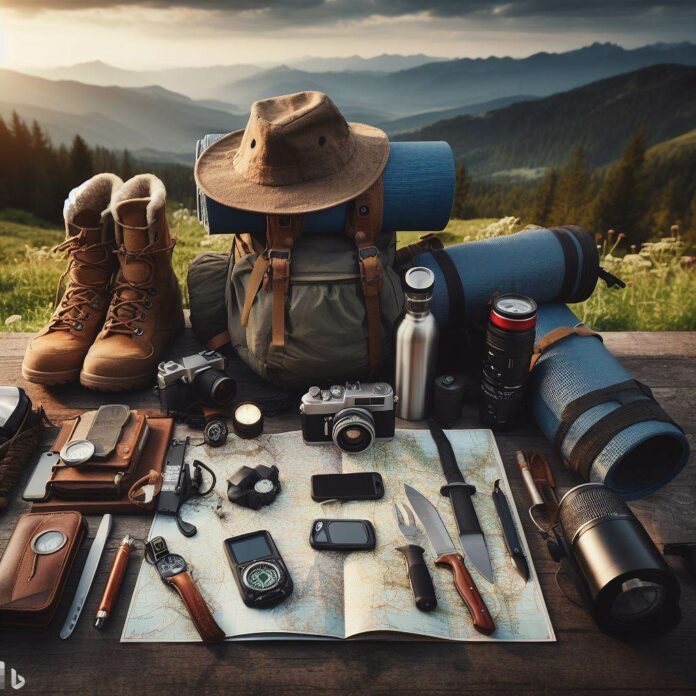Packing light is a crucial skill to master when embarking on an outdoor adventure. Whether you’re going on a hiking trip, camping expedition, or backpacking adventure, minimizing the weight and bulk of your gear can make your experience more enjoyable and hassle-free.
Before you start packing, consider the duration of your adventure, the activities you’ll be doing, and the weather conditions you’ll be facing. Understanding these factors will help you determine what essentials to bring and what can be left behind.
Invest in lightweight and compact equipment that serves multiple purposes. Opt for gear made from lightweight materials without compromising on durability. You can also consider renting or borrowing gear to lighten your load further.
Use packing cubes or compression bags to efficiently organize and compress your gear. Maximize space in your backpack by strategically placing items and using all available pockets and compartments.
Stick to versatile clothing items that can be mixed and matched for different weather conditions. Choose lightweight and durable footwear that is suitable for the activities you’ll be undertaking.
Plan your meals and opt for lightweight, non-perishable food items. Consider water filtration or purification methods to minimize the weight of carrying large quantities of water.
Bring travel-sized toiletries and consider environmental-friendly options such as solid toiletries. Only pack essential personal items and avoid duplicating items that can serve multiple purposes.
Resist the urge to pack “just in case” items and focus on essentials. Wear bulky items instead of packing them to free up space in your backpack. Practice and refine your packing list with each outdoor adventure to become more efficient.
By following these tips and adopting a minimalist mindset, you’ll be able to pack light for an outdoor adventure and experience the freedom and convenience that comes with traveling with a lighter load.
Tips for Packing Light for an Outdoor Adventure
- Choose lightweight and compact gear: Opt for gear that is specifically designed to be lightweight and easy to pack, such as a lightweight tent, sleeping bag, and cooking equipment.
- Bring versatile clothing: Pack clothing items that can be used for multiple purposes and can be layered for different weather conditions. Choose lightweight and quick-drying materials.
- Minimize toiletries: Carry only essential toiletries in travel-sized containers to save space and weight.
- Consider multipurpose items: Look for items that serve multiple functions, such as a lightweight backpack that can also be used as a daypack or a sleeping bag that can double as a blanket.
- Pack efficiently: Use packing cubes or compression sacks to maximize space and keep your gear organized. Roll your clothes instead of folding them to save space.
- Leave unnecessary items behind: Evaluate each item and ask yourself if it’s truly necessary for your outdoor adventure. Leave behind any non-essential items that will only add weight to your pack.
- Stay organized: Create a checklist to ensure you don’t forget anything important and to avoid overpacking. Keep a separate list for essential items that cannot be left behind.
- Test your gear: Before heading out on your adventure, make sure to test your gear to ensure everything is functioning properly and that you are familiar with how to use it.
- Maintain a good balance: While it’s important to pack light, also consider your comfort and safety. Don’t compromise on essential items that are necessary for your well-being during the outdoor adventure.
Assessing Your Needs
When assessing your needs for packing light on an outdoor adventure, follow these steps:
- Consider the duration of your adventure. Determine how many days you will be out and plan accordingly.
- Evaluate the weather conditions. Research the climate at your destination and assess your needs for suitable clothing and gear.
- Assess the activities you will be participating in. Will you be hiking, camping, or engaging in water sports? Assess your needs and pack the necessary equipment for each activity.
- Take into account the terrain you will be navigating. Is it rugged, mountainous, or flat? Assess your needs and choose appropriate footwear and gear.
- Consider any special needs or requirements. Do you have any dietary restrictions, medical conditions, or specific comfort needs? Assess your needs and plan accordingly.
What is the Duration of Your Adventure?
When preparing for an outdoor adventure, it is crucial to consider the duration of your adventure. What is the duration of your adventure? The length of your adventure will determine what supplies you need to pack, including food, water, and gear.
For shorter trips, such as day hikes or overnight camping, you can pack lighter and bring only the essentials. Consider carrying lightweight and compact equipment to minimize the weight of your backpack.
Opt for versatile clothing that can be layered for changing weather conditions. It is essential to know what the duration of your adventure is, as it will help you determine the number of supplies needed.
On longer expeditions, like multi-day backpacking trips, the duration of your adventure becomes even more critical. You will need to plan for more supplies, considering the number of days.
Calculate the amount of food and water you will need based on the duration of your adventure. It is advisable to pack lightweight and non-perishable food to minimize weight and ensure you have enough sustenance.
Additionally, consider water filtration or purification methods to ensure a safe water supply throughout your journey. Understanding what the duration of your adventure is crucial for proper planning.
Remember, always adapt your packing list to your specific needs and the duration of your adventure. Be prepared for unexpected challenges and pack accordingly to maintain your safety and comfort throughout the trip.
What Activities Will You Be Doing?
When planning for an outdoor adventure, it is important to consider what activities you will be doing in order to pack appropriately. Here are some considerations:
- Hiking: If hiking is on your itinerary, make sure to pack comfortable and sturdy hiking boots with good traction to ensure stability on uneven terrain. Additionally, bring layered clothing to adjust to changing temperatures and weather conditions.
- Camping: For camping trips, you will need to pack a tent, sleeping bag, and camping stove. It’s also important to bring cooking equipment and utensils for preparing meals in the great outdoors.
- Cycling: If your adventure involves cycling, pack appropriate cycling gear such as a helmet, padded shorts, and cycling shoes. Don’t forget to bring a repair kit and necessary tools to handle any unexpected bike maintenance.
- Water activities: If you will be participating in water activities like kayaking or swimming, pack a bathing suit, towel, and waterproof bag to keep your belongings dry. It’s also essential to have a life jacket or personal flotation device for safety.
- Wildlife watching: If observing wildlife is part of your adventure, bring a pair of binoculars and a field guide to aid in identification. It is important to respect wildlife and observe from a safe distance.
By considering what activities you will be doing, you can ensure that you have the appropriate gear and equipment to fully enjoy your outdoor adventure.
Choosing the Right Gear
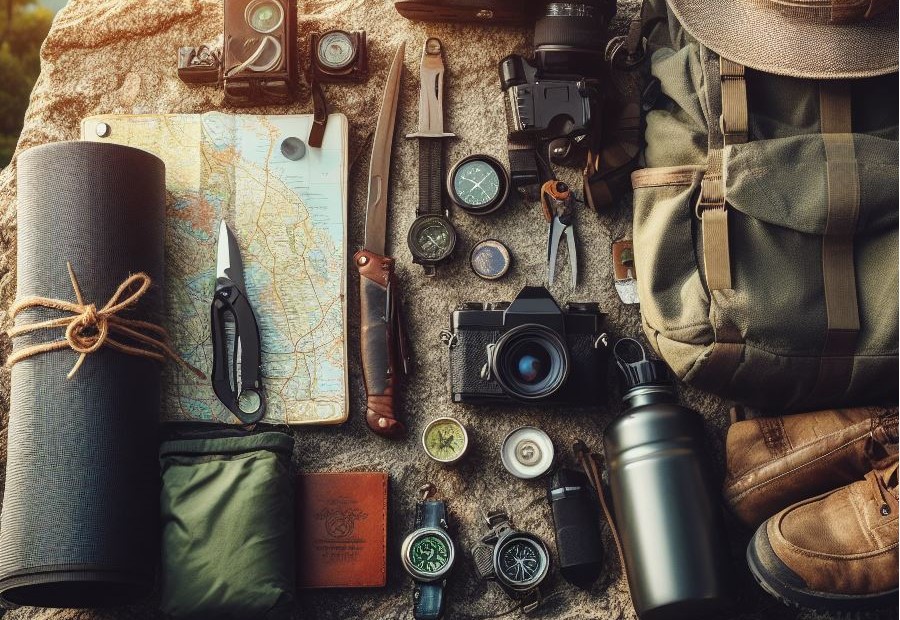
When it comes to embarking on an outdoor adventure, selecting the right gear is crucial. In this section, we’ll dive into the art of choosing the perfect equipment that will make your journey a breeze.
From investing in lightweight and compact gear to exploring multi-purpose items, we’ll explore how you can pack smartly and efficiently. We’ll also touch on the benefits of renting or borrowing gear and share some tips on organizing your gear effectively.
So let’s gear up and prepare for an unforgettable outdoor experience!
Invest in Lightweight and Compact Equipment
When preparing for an outdoor adventure, it is essential to invest in lightweight and compact equipment. This will not only make your journey more comfortable but also ensure that you can carry all the necessary gear without added strain.
- Choose lightweight materials: Look for equipment made from lightweight materials such as carbon fiber or titanium. This will significantly reduce the overall weight of your gear.
- Opt for compact designs: Select equipment that can be easily folded, collapsed, or disassembled to save space in your backpack.
- Multipurpose tools: Invest in items that serve multiple functions, such as a camping stove that can also be used as a pot or a tent that can double as a tarp.
- Consider renting or borrowing: If you don’t frequently engage in outdoor activities, consider renting or borrowing equipment instead of buying. This will save you money and storage space.
Fact: Lightweight equipment can make a significant difference in reducing fatigue and improving overall enjoyment during your outdoor adventure. So, choose your gear wisely!
Multi-purpose Items
When preparing for an outdoor escapade, it is crucial to include multi-purpose items that can fulfill various functions. These versatile pieces not only aid in conserving space and reducing weight in your backpack, but also offer adaptability in diverse situations.
| Item | Functions |
| Bandana | Can serve as a headband, face mask, towel, or even a makeshift bag. |
| Paracord | Serves multiple purposes such as establishing a shelter, securing gear, or creating a clothesline. |
| Duct Tape | Can be utilized for repairing gear, fashioning makeshift straps, or even as a measure to prevent blisters. |
| Swiss Army Knife | Equipped with numerous tools like a knife, can opener, screwdriver, and more, making it highly valuable for a variety of tasks. |
By incorporating these multi-purpose items into your packing checklist, you can ensure that you possess the essential tools to adapt to different situations during your outdoor adventure.
Not only do they optimize space and reduce weight, but they also offer practical solutions when needed.
Pro Tip: Prior to your trip, make sure to familiarize yourself with the functions and usage of these multi-purpose items. Practice employing them in various scenarios to fully capitalize on their versatility during your outdoor excursion.
Consider Renting or Borrowing Gear
When preparing for your outdoor adventure, it’s worth considering renting or borrowing gear. This can be a cost-effective and practical solution that allows you to acquire the necessary equipment without investing in expensive gear.
Here are some reasons why you should consider incorporating the option to rent or borrow gear:
- Cost savings: Renting or borrowing gear can help save you money, especially if you only need it for a short period of time. It gives you access to high-quality equipment without the hefty price tag.
- Try before you buy: Renting or borrowing gear lets you test out different brands and models before making a purchase. This way, you can determine which gear works best for you and suits your needs.
- No maintenance required: Owning gear means taking care of it and ensuring proper maintenance. However, renting or borrowing gear eliminates the need for maintenance since you can simply return it once your adventure is over.
- Convenience and space-saving: Renting or borrowing gear means you don’t have to worry about carrying heavy equipment to your destination. It saves valuable space in your backpack or luggage, allowing you to pack lighter and travel more comfortably.
Pro-tip: Before considering renting or borrowing gear, remember to check the condition of the equipment and verify that it meets your specific needs. Also, make sure to always return the gear in the same condition you received it to avoid any additional charges or fees.
Organizing Your Gear
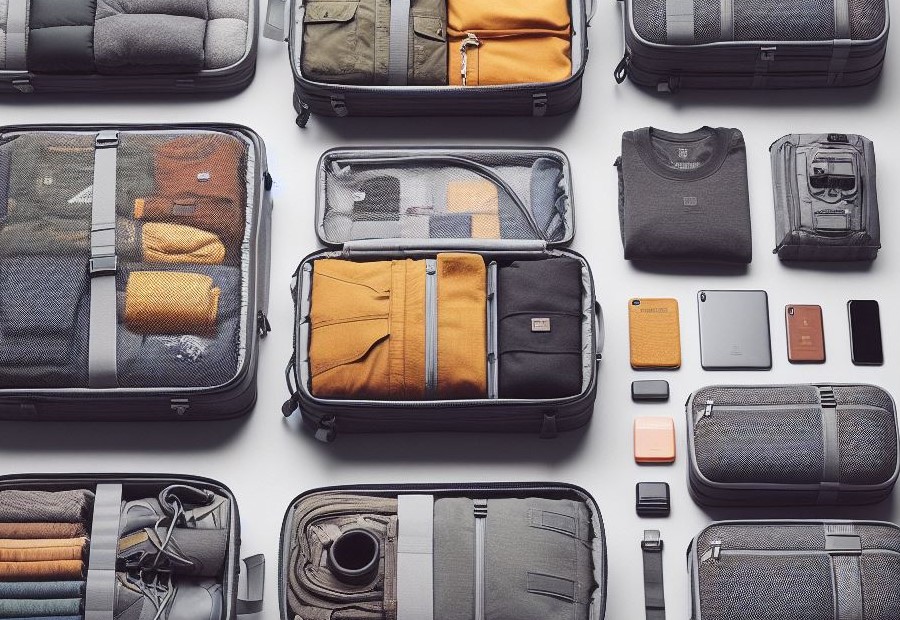
To effectively organize your gear for an outdoor adventure, follow these steps:
- Use packing cubes or compression bags to efficiently organize your gear and maximize space in your backpack.
- Categorize your gear into clothing, cooking equipment, and sleeping supplies to easily locate items.
- Create a checklist or inventory of your gear to ensure you have all the necessary items.
- Label your gear and containers to quickly identify their contents.
- Keep frequently used items in easily accessible pockets or compartments.
- Pack heavier items closer to your back for better weight distribution.
- Consider using dry bags or waterproof containers to safeguard your gear from water damage.
When organizing my gear for a hiking trip, I discovered the game-changing benefits of using packing cubes. They allowed me to neatly separate my clothes, toiletries, and other essentials, making it much easier to locate what I needed without rummaging through my backpack.
Additionally, utilizing labels on my food containers saved me time when preparing meals at the campsite. By implementing these effective organization techniques, I was able to efficiently pack and access my gear, ensuring a smooth and enjoyable outdoor adventure.
Use Packing Cubes or Compression Bags
When preparing for an outdoor adventure, it is highly beneficial to utilize packing cubes or compression bags. These tools assist in effectively organizing and maximizing the space inside your backpack.
Let’s explore the key reasons why you should opt for packing cubes or compression bags:
- Maximize space: By utilizing packing cubes or compression bags, you can efficiently utilize the available space in your backpack. These tools allow you to compress your clothes or gear, enabling you to fit more items while maintaining organization.
- Keep items separate: Packing cubes offer separate compartments, enabling you to keep different types of clothing or gear separate. This facilitates easy access to specific items without rummaging through your entire backpack.
- Reduce wrinkles: Compression bags are particularly advantageous for minimizing wrinkles on your clothes. By tightly compressing them, you can ensure that even delicate or wrinkle-prone garments remain smooth and unwrinkled.
- Protect items: Packing cubes offer a level of protection for your belongings. They help safeguard fragile items from potential damage or being crushed during transit.
- Easy unpacking: Upon reaching your destination, unpacking becomes effortless with the use of packing cubes. Simply remove the cubes from your backpack and place them in drawers or on shelves. This convenient method ensures that everything remains organized and easily accessible.
Incorporating packing cubes or compression bags into your packing routine can significantly enhance your overall experience. These tools enable you to utilize space efficiently and keep your items well-organized throughout your outdoor adventure.
Optimize Space in Your Backpack
To optimize space in your backpack for an outdoor adventure, follow these steps:
- Maximize space by rolling your clothes instead of folding them.
- Save even more space by utilizing packing cubes or compression bags to compress your clothing.
- Distribute weight evenly by packing your heaviest items at the bottom of your backpack.
- Store small items like socks or toiletries inside your shoes to make use of empty spaces.
- Minimize the space they take up in your backpack by considering lightweight and compact gear.
- Create more internal space by using carabiners or straps to attach items like water bottles or camping gear to the outside of your backpack.
- Minimize their size when not in use by opting for collapsible or foldable items, such as a packable rain jacket or a portable camping stove.
- Keep everything tidy and easy to find by organizing items in smaller bags or pouches within your backpack.
Packing Apparel and Footwear

Packing for an outdoor adventure can be a challenge, especially when it comes to apparel and footwear. In this section, we’ll dive into the essentials of packing light for your trip.
From choosing versatile clothing options to efficiently packing for different weather conditions, and selecting lightweight and durable footwear, we’ve got you covered.
So, get ready to streamline your packing process and make the most of your outdoor escapades!
Stick to Versatile Clothing
When it comes to packing light for an outdoor adventure, it is essential to stick to versatile clothing. This will not only save you space in your backpack but also ensure that you have the right attire for any weather conditions or activities you may encounter.
- Choose clothing items that can be easily layered. This will allow you to add or remove layers depending on the temperature.
- Opt for moisture-wicking and quick-drying fabrics. This will help keep you comfortable and dry, especially during physical activities.
- Pack clothing items that can serve multiple purposes. For example, a lightweight jacket that can be worn as a windbreaker during hikes or as a layering piece in colder weather.
- Consider neutral colors that can easily be mixed and matched. This will give you more outfit options without having to pack excessive amounts of clothing.
- Pack clothing items that are lightweight and compact. Look for materials that are lightweight but still offer protection from the elements.
Pack Efficiently for Different Weather Conditions
To pack efficiently for different weather conditions during your outdoor adventure, consider the following:
- Check the weather forecast: Before packing, find out the expected weather conditions for your trip. This will help you determine what types of clothing and gear you’ll need.
- Layer your clothing: Layering is key for adapting to changing temperatures. Pack lightweight base layers, insulating mid-layers, and a waterproof and windproof outer layer. This way, you can add or remove layers depending on the weather.
- Choose versatile clothing: Opt for items that can be worn in different weather conditions. For example, a convertible jacket that can be worn as a full jacket or converted into a vest is a great option.
- Consider temperature ranges: If you anticipate a wide range of temperatures, pack clothing that can be easily adjusted. For example, choose pants with zip-off legs that can be converted into shorts.
- Bring appropriate accessories: Don’t forget essential accessories like hats, gloves, and scarves that can provide extra warmth in colder conditions.
- Pack for rain: Even if rain is not in the forecast, it’s always a good idea to pack a lightweight and compact rain jacket or poncho. They take up minimal space but can be a lifesaver if unexpected rain occurs.
- Consider the terrain: If you’ll be hiking in rugged terrain or encountering wet conditions, pack waterproof or water-resistant footwear to keep your feet dry and comfortable.
Choose Lightweight and Durable Footwear
When preparing for an outdoor adventure, it is crucial to choose the appropriate footwear. Here are a few suggestions to assist you in selecting lightweight and long-lasting shoes:
- Take into account the type of terrain you will navigate during your adventure. If you plan on hiking on challenging trails, opt for durable hiking boots with ankle support. For less demanding terrain, or hiking shoes may suffice.
- Make durability a top priority and seek footwear that is constructed from resilient materials capable of withstanding outdoor activities. Reinforced toe caps and durable outsoles are essential features to look out for.
- Attaining a proper fit is crucial when it comes to footwear. Ensure that you try on different options and select a pair that fits comfortably and securely. Ill-fitting shoes can lead to discomfort and blisters.
- Consider the weight of the shoes you choose in order to minimize strain on your feet and legs during long hikes or treks. Opt for lightweight materials like mesh uppers and foam midsoles to reduce overall shoe weight.
- Depending on the weather conditions and activities you will partake in, it is wise to choose footwear that provides some level of water resistance. Waterproof or water-resistant shoes will keep your feet dry and comfortable.
By selecting lightweight and durable footwear, you can ensure that your feet remain protected and comfortable throughout your outdoor adventure.
Packing Food and Water
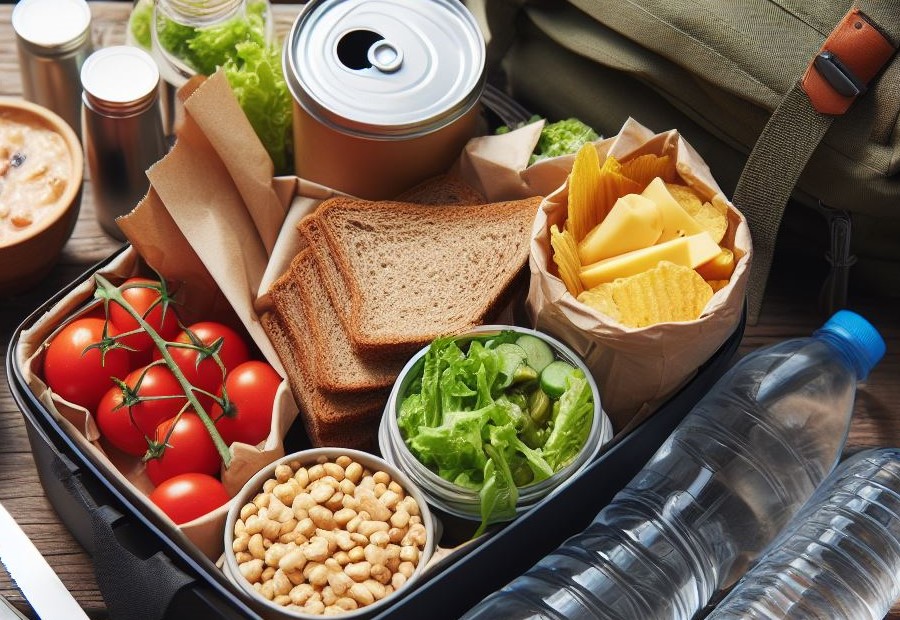
When it comes to packing for an outdoor adventure, the section dedicated to packing food and water is a crucial one. In this part, we’ll uncover invaluable tips and tricks to ensure that your meals are well-planned, lightweight, and non-perishable.
Additionally, we’ll explore various water filtration and purification methods to guarantee a safe and sufficient water supply on your journey. So, get ready to pack smarter and lighter for your next thrilling outdoor escapade!
Plan Your Meals
To effectively plan your meals for your outdoor adventure, consider the duration of your trip. If it’s a short journey, it’s best to plan for simple meals. However, for longer trips, it’s important to prepare meals that can provide sufficient nutrients and energy.
Another crucial factor to consider is the available cooking facilities. If you have access to a stove or fire pit, you can plan for more elaborate meals. On the other hand, if you don’t have these amenities, it’s best to choose meals that require minimal cooking or can even be eaten cold.
Create a comprehensive meal plan that offers a variety of options. Make sure to incorporate breakfast, lunch, dinner, and snacks. When planning, think about including proteins, carbohydrates, fruits, and vegetables to ensure a well-balanced diet.
Calculate the quantity of food needed for each meal by taking into account the number of people in your group and their appetites. It’s essential to pack enough food to maintain energy levels throughout your adventure.
Opt for lightweight and non-perishable food items that are easy to carry and won’t spoil quickly. Great choices include granola bars, dehydrated meals, trail mix, and canned goods.
While convenience is important, don’t compromise on nutrition. Try to include healthy options that provide essential nutrients in your meal plan.
If anyone in your group has special dietary needs or restrictions such as food allergies or specific diets, be sure to accommodate their requirements when planning meals.
Take into consideration the availability of water. Plan meals that require minimal water for cooking and rehydration. It’s also beneficial to bring water purification methods like filters or tablets to ensure a safe water supply.
Make sure to pack appropriate cooking utensils and equipment for your outdoor cooking needs. Lightweight pots, pans, and utensils are ideal. If necessary, don’t forget to bring a camping stove or matches.
To keep your food secure and avoid any leakage, use resealable bags or containers. Label them with meal names and instructions for easy access and preparation.
Opt for Lightweight and Non-perishable Food
When preparing for your outdoor adventure, prioritize lightweight and non-perishable food options. Here are some suggestions:
- Dehydrated meals: These meals are lightweight and compact, making them easy to carry. Additionally, they have a long shelf life, which is ideal for extended trips.
- Energy bars: Select energy bars that are high in calories and offer a balanced combination of carbohydrates, protein, and fats. Seek out individually wrapped options for added convenience.
- Dried fruits and nuts: These are nutritious and lightweight snacks that provide a quick energy boost. Opt for unsalted and sugar-free varieties.
- Jerky: Beef or turkey jerky serves as an excellent protein source and can be conveniently packed. Look for low-sodium options.
- Crackers or rice cakes: These options are lightweight and provide a good source of carbohydrates. Choose individually wrapped varieties to maintain freshness.
Pro-tip: Remember to include spices or seasonings to enhance the flavor of your meals. You may want to transfer them to small, lightweight containers for easier transport.
Consider Water Filtration or Purification Methods
When preparing for an outdoor adventure, it is crucial to consider water filtration or purification methods to ensure access to safe drinking water. Here are some options to keep in mind:
- Water filters: Portable water filters, such as those with activated carbon or ceramic filters, can effectively remove bacteria, protozoa, and some viruses from water sources.
- Water purification tablets: These tablets contain chemicals like chlorine or iodine that can kill harmful microorganisms in water. They are lightweight and convenient to carry.
- UV water purifiers: UV water purifiers use ultraviolet light to destroy the DNA of microorganisms, effectively sterilizing the water. They are quick and easy to use but require batteries or a power source.
- Boiling water: Boiling water is a traditional method of purifying water. By bringing water to a rolling boil for at least one minute (or longer at higher altitudes), you can kill most types of bacteria, viruses, and parasites.
- Chemical water treatments: Chemicals like chlorine dioxide or sodium hypochlorite can be used to disinfect water. Simply follow the instructions on the product for the correct dosage and waiting time.
Remember, it’s essential to consider water filtration or purification methods and assess the water sources available during your outdoor adventure. Choose the suitable method of water filtration or purification accordingly.
Ensure you have the necessary equipment and knowledge to purify water effectively, providing you with safe drinking water throughout your journey.
Minimizing Toiletries and Personal Items
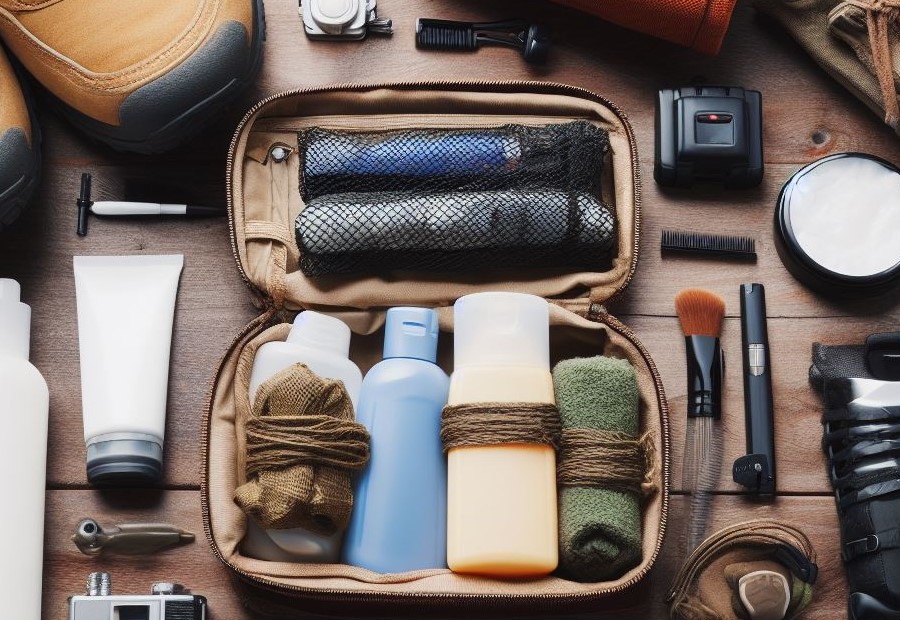
Ditch the unnecessary baggage and travel smarter! This section uncovers the art of minimizing toiletries and personal items for your outdoor adventure. Discover the secrets of packing light by opting for travel-sized items and exploring eco-friendly alternatives.
Get ready to lighten your load without compromising on your hygiene and personal care needs. Leave excess baggage behind and embark on your adventure with ease and mindfulness!
Bring Travel-sized Items
When preparing for an outdoor adventure, it can be beneficial to bring travel-sized items. Incorporating travel-sized items into your packing can help reduce the weight of your load and maximize space.
Here are some reasons why you should consider bringing travel-sized items:
- Convenience: Travel-sized items are compact and portable, making them easy to pack and carry without adding unnecessary weight to your backpack.
- Space-saving: These smaller versions of your essential toiletries and personal items take up less space, enabling you to pack more efficiently and have room for other necessary gear.
- Compliance with regulations: Travel-sized items usually meet the requirements for carrying liquids on airplanes, making them perfect for adventure trips that involve air travel.
- Less waste: By opting for travel-sized items, you can decrease the amount of packaging waste generated during your trip, promoting more eco-friendly practices.
Pro-tip: Before embarking on your outdoor adventure, check if your favorite brands offer travel-sized versions of their products.
Alternatively, you can transfer your regular-sized items into reusable travel-sized containers to further minimize waste and enhance convenience.
Consider Environmental-friendly Options
When packing for an outdoor adventure, it is crucial to consider environmental-friendly options. It is essential to choose reusable alternatives rather than single-use items.
Opt for refillable water bottles, food containers, and cutlery, which will reduce waste and minimize the impact on the environment.
Additionally, using eco-friendly toiletries is recommended. Look for biodegradable and environmentally-friendly soap, shampoo, and toothpaste, as these products are designed to minimize harm to ecosystems when used in outdoor environments.
When it comes to camping gear, it is advisable to bring eco-friendly options. Consider using gear made from sustainable materials, such as tents made from recycled fabrics or sleeping bags filled with recycled insulation.
By choosing gear that is built to last and has a minimal environmental footprint, you contribute to eco-consciousness.
Another essential aspect is to follow the Leave No Trace principles. Ensure you familiarize yourself with these principles, which promote responsible outdoor practices. This includes leaving natural spaces as you found them and minimizing your impact on wildlife and vegetation.
Practicing responsible waste management is vital. It is crucial to pack out all of your trash and correctly dispose of it when you have access to appropriate waste facilities. Avoid leaving any litter behind and try to reduce your overall waste by packing lightweight and non-perishable food options.
By considering these environmental-friendly options, you can enjoy your outdoor adventure while minimizing your impact on the environment. Remember, it’s important to leave nature as pristine as possible for future generations to enjoy.
Additional Tips for Packing Light
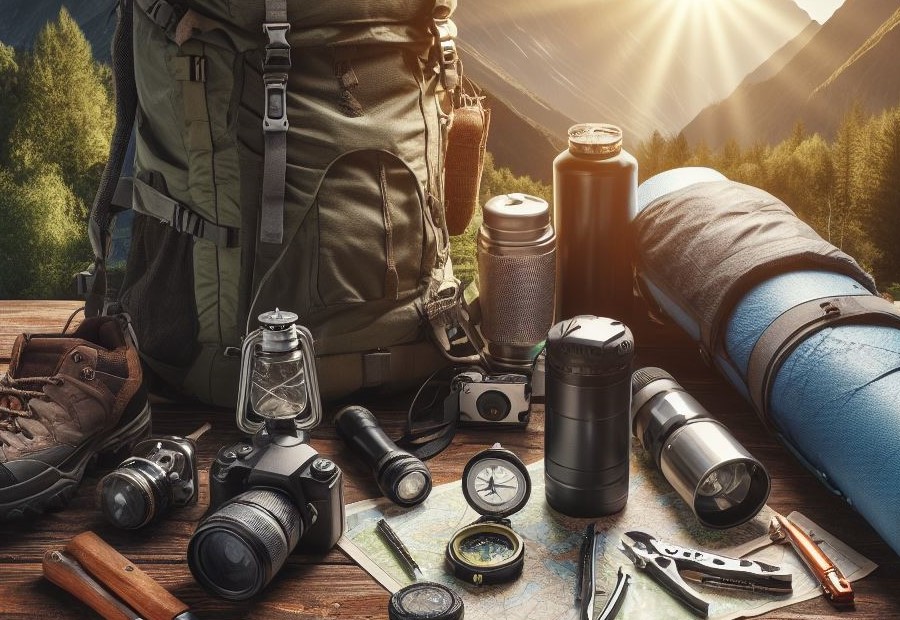
When it comes to packing light for an outdoor adventure, every ounce counts. In this section, we’ll uncover some additional tips that can make a significant difference in your pack weight.
Say goodbye to the “just in case” items, and discover the art of wearing your bulky items instead of packing them. We’ll also dive into the importance of practicing and refining your packing list, ensuring you only carry the essentials.
Get ready to streamline your pack and embrace the freedom of a lighter load!
Don’t Pack “Just in Case“
When packing light for an outdoor adventure, it’s important to avoid packing unnecessary items “just in case“. Here are some steps to help you avoid overpacking:
- Evaluate your needs: Assess the specific activities, duration, and weather conditions of your adventure.
- Plan your essentials: Make a list of the necessary items you will need for your adventure.
- Stick to the essentials: Pack only the items that are essential for your adventure. Avoid packing items that you think you might need but are not crucial.
- Consider versatility: Opt for versatile items that can serve multiple purposes, reducing the need for extra items.
- Use travel-sized items: Bring travel-sized toiletries and personal items to minimize space and weight.
- Practice and refine your packing list: By practicing packing light and refining your list, you can become more efficient in choosing what to pack.
By following these steps, you can avoid the temptation to pack unnecessary items “just in case” and ensure that your backpack remains lightweight and organized throughout your outdoor adventure. Remember to prioritize only the items that are essential for your needs.
Wear Bulky Items Instead of Packing Them
When preparing for an outdoor excursion, it can be quite a challenge to fit all the necessary items into your backpack. One effective approach to save precious space is to opt for wearing bulky items rather than packing them. Here are some simple steps to follow:
- Select bulky items such as jackets, hoodies, or hiking boots that occupy a significant amount of space.
- Wear these voluminous items while en route to your destination instead of stowing them in your backpack.
- By doing so, you will free up valuable space in your backpack for other essential items.
- Ensure that the items you choose to wear are appropriate for the prevailing weather conditions during your journey.
By opting to wear bulky items rather than packing them, you can maximize the space in your backpack and make room for other necessary equipment. Additionally, wearing layers can assist you in adapting to fluctuating temperatures during your outdoor adventure.
Practice and Refine Your Packing List
To practice and refine your packing list for an outdoor adventure, follow these steps:
- Start with a comprehensive packing list that includes all the essential items you need for your trip.
- Review the list and identify any items that are not necessary or that you can do without.
- Prioritize the items based on their importance and usefulness during your adventure.
- Consider the weight and size of each item. Opt for lightweight and compact alternatives whenever possible.
- Test your packing list by packing your gear and assessing the overall weight and size of your backpack or luggage.
- Take note of any items that you didn’t use during the trip and remove them from your packing list for future adventures.
- Pay attention to any items that you wished you had or that would have been useful during the trip. Add them to your packing list for future reference.
Fact: By regularly practicing and refining your packing list, you can ensure that you only bring the essentials and avoid the unnecessary burden of carrying extra weight during your outdoor adventures.
Frequently Asked Questions
How can I pack light for an outdoor adventure?
To pack light for an outdoor adventure, follow these tips:
- Pack only the must-haves and avoid unnecessary gear
- Choose versatile clothing and items that serve multiple purposes
- Limit your clothing to one week’s worth and use a personalized packing list
- Opt for lightweight options like quick-dry, packable clothing
- Use smaller containers and solid toiletries to save space
- Organize your belongings with packing cubes and a laundry bag
- Consider using a smaller, lightweight duffel bag with straps
- Rent equipment at your destination for biking or water sports
- Pack essentials like a dry bag, swimsuit, quick-drying shorts, and sunscreen
- Rent backpacking gear and pack essentials like a sleeping bag and rain jacket
- Opt for quick-cook oatmeal and prepackaged meals to save space in packing food
Why is it beneficial to pack light for an outdoor adventure?
Packing light for an outdoor adventure offers several benefits:
– Saves money on flights and avoids check-in fees
– Makes packing and unpacking easier and more efficient
– Increases mobility and allows for easy movement over rough terrain
– Ensures you are always in control of your luggage
– Saves time and reduces hassle during travel
– Allows you to be more flexible and adaptable in changing situations
What are some essential items to pack for an outdoor adventure?
Essential items to pack for an outdoor adventure include:
– Reusable water bottles for staying hydrated
– Navigation tools, such as a map holder or GPS device
– Sun protection, like a sun hat and lip protector
– Basic first aid supplies
– A knife or multitool for various purposes
– Fire-starting materials
– Shelter, such as a tent or poncho
– Extra food and water
– Extra clothes, including quick-dry clothing and insect repellent
– Gear repair kit for any unexpected equipment issues
How can I reduce the weight of my backpack for a multi-day adventure?
To reduce the weight of your backpack for a multi-day adventure, follow these tips:
– Evaluate your clothing and gear and avoid taking unnecessary items
– Choose lightweight and quick-drying fabrics
– Opt for items that serve multiple purposes, such as a poncho or sarong
– Consider wearing light trail-running shoes instead of bulky hiking boots
– Pack basic toiletry supplies in travel-size quantities
– Know the resources available at your pit stops to restock supplies
– Eat the heaviest and perishable food first
– Share common items with others
– Learn bushcraft and survival skills to lessen your load
– Minimize luxury items and prioritize essentials
Should I bring my own equipment for outdoor activities like mountain biking?
For outdoor activities like mountain biking, it’s recommended to rent equipment at your destination to save space. However, you should bring your own helmet, sunglasses, shoes, pedals, gloves, and camelback for a personalized and comfortable experience.
What are some additional packing tips for a multi-day adventure?
Additional packing tips for a multi-day adventure include:
– Roll clothes instead of folding to save space
– Keep the heaviest items in the middle compartment of your backpack for a steadier center of gravity
– Use a packing system to keep your backpack organized
– Carry a watertight phone case and extra batteries
– Pack an inflatable travel pillow for added comfort
– Carry a gear repair kit for any necessary fixes
– Prioritize your needs and wants to ensure a comfortable weight
– Be prepared with basic medicine and first aid supplies
– Consider learning techniques such as bushcraft and survival skills to further reduce your packing weight

